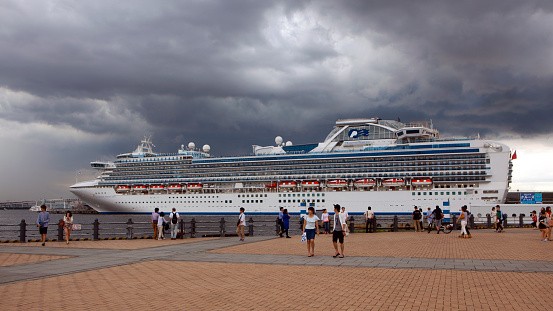With the tourism industry deeply affected by the coronavirus pandemic, cruise ships have become high-risk locations due to the close-contact environment. Recently, the Centers for Disease Control and Prevention (CDC) announced that all cruise ships will stop sailing by the end of September.

The CDC's recent study was published in the Journal of Travel Medicine. In an analysis of 11,000 passengers and crew members disembarking, the CDC has estimated that around 38,000 people may have possibly been infected by coronavirus. These figures have not been confirmed due to the intensive contact tracing required for accurate results.
Moreover, port officials have been concerned that cruise ships put the shoreside public in danger of infection. Even worse, crew members and people on cruises at this time have been traveling all over the world.
Cases on Board
The CDC reported that between March 1 and July 10, almost 3000 cases of coronavirus or virus-like illnesses were confirmed on cruise ships with over 30 deaths. During the same period, 123 cruise ships reported almost 100 outbreaks, affecting 80% of U.S. jurisdiction ships. Nine cruise ships are still handling outbreaks on board.
One of the cruise ships not included in the study but made headlines in February was the Diamond Princess. More than 700 people contracted coronavirus with a death count of 13. Some passengers stayed on board the ship for a 14-day quarantine while others were evacuated to quarantine centers onshore.
While those who disembarked from the Diamond Princess and the Grand Princess to the United States underwent mandatory quarantine, passengers going home to other countries did not self-isolate. Most of those diagnosed with coronavirus had probably been exposed to the public while traveling home. 'Before the 'No-Sail Order' in mid-March, passengers traveled back to their homes on their own - both domestically and internationally,' said CDC spokesperson Caitlin Shockey.
Cruise ships such as Holland America's MS Zaandam, whose passengers disembarked in Florida, were not ordered to have its passengers and crew members for mandatory quarantine. As a result, 250 people had flu-like symptoms and there were four deaths. Most of the asymptomatic passengers were allowed to go home after a health screening but were not told to undergo a two-week quarantine.
In the study, the transmission rate at Diamond Princess was four times higher than the rate in Wuhan, China. The proximity within the cruise ship affected 3,711 passengers and crew members. 'The cruise ship conditions clearly amplified an already highly transmissible disease,' noted the study.
Read Also: [COVID-19 Update] How Does the Weather Affect Covid-19 Droplets?
'Tip of the Iceberg'
However, the mandatory quarantine that the Diamond Princess passengers and crew followed had prevented an estimate of 2,000 additional cases. The study noted that if evacuation had occurred sooner, fewer crew members and passengers would have been infected.
There is also the possibility that some passengers were infected by exposure to public transport, airports, or hotels before embarking on cruise ships. Furthermore, since symptoms appear anytime between two days and two weeks, infected passengers had most likely already exposed many others on board to the virus.
'Now, the virus is amplified ... and scattered,' Cetron said. 'It's quite clear this is a formula for accelerated introduction, transmission and then accelerated spread. What you see in our reported case numbers is just the tip of the iceberg.'
Read Also : [COVID-19 Update] Coronavirus Symptoms Can Predict Which Will Lead to a Severe Case, Says Study












